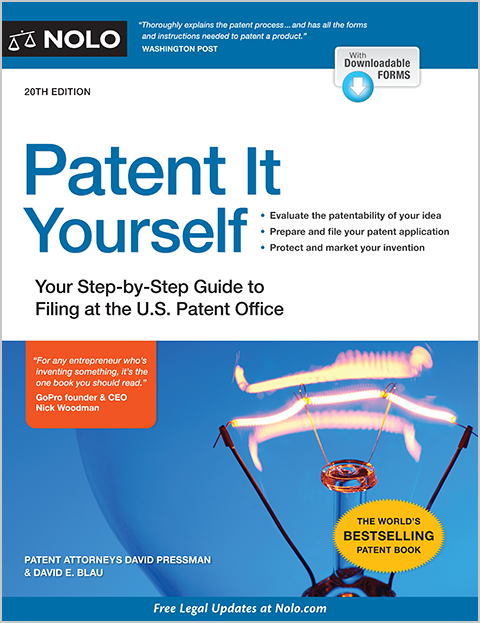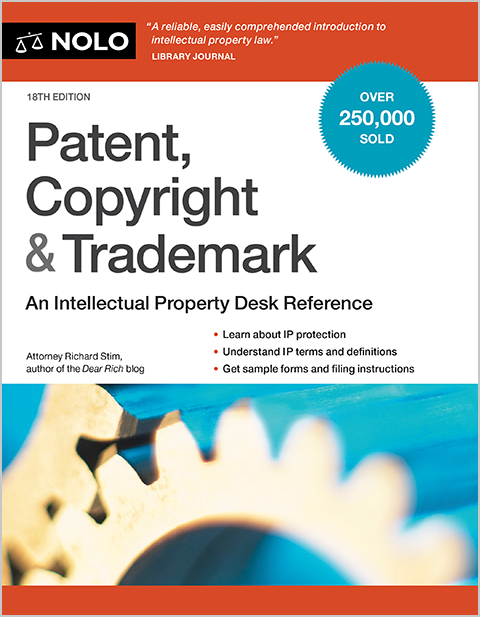Learn about the concept of "transformative use" and how it can lead to a defense against a claim of copyright infringement.
Copyright law gives authors certain exclusive rights to their work. These rights include the exclusive right to reproduce and distribute the work. However, fair use allows other people to may make limited use of the original author's work without asking permission and without committing copyright infringement.
Fair use is defined in Section 107 of the Copyright Act of 1986 (17 U.S. Code § 107). It is a defense against a copyright infringement claim: If a use is fair use, it isn't infringement.
When determining whether something is fair use, an important issue is often whether the use is "transformative."
Transformative Use as an Element of Fair Use
Courts consider four factors in determining whether a particular use of copyrighted material qualifies as fair use. The first factor is the "purpose and character of the use," including whether the use is "transformative."
A transformative use adds "new expression, meaning, or message" to the original work. It's more likely to qualify as fair use than non-transformative copying.
"Oh, Pretty Woman": The Origin of the Transformative Use Analysis
The U.S. Supreme Court established the way we now think of transformative use in a 1994 U.S. Supreme Court case involving a rap group, 2 Live Crew, and its copying of portions of the song "Oh, Pretty Woman." (Campbell v. Acuff-Rose Music, 510 U.S. 569 (1994).) The band had borrowed the first line ("Pretty woman, walking down the street") and the opening bass riff from "Oh, Pretty Woman." The rest of the lyrics and the music in the 2 Live Crew song weren't borrowed from "Oh, Pretty Woman."
2 Live Crew had tried to get permission to use portions of the song and were willing to pay a license fee. They were rebuffed by the publisher, who didn't want "Oh, Pretty Woman" used in a rap song. 2 Live Crew used the lyric and bass riff anyway, and were sued for copyright infringement.
Purpose and Character of the Use
In a decision that surprised many in the copyright world, the Supreme Court ruled that the borrowing was fair use. The decision was based in part on the fact that the 2 Live Crew song copied so little material from the original song. But the Court also added a new dimension to the fair use analysis: examining whether the purpose and character of the use was transformative.
The Court found that the 2 Live Crew song was transformative because it was a parody of "Oh, Pretty Woman." A new work qualifies as a parody if it makes fun of the original work. In this case, lyrics and the bass riff of the original song were used to poke fun at the original song, specifically at the norms of what's "pretty."
New Expression, Meaning, or Message
As Justice Souter wrote in the opinion to the 2 Live Crew case, the inquiry into transformative use "focuses on whether the new work merely supersedes the objects of the original creation, or whether and to what extent it's 'transformative,' altering the original with new expression, meaning, or message." The opinion went on to state that "[t]he more transformative the new work, the less will be the significance of other factors, like commercialism, that may weigh against a finding of fair use."
The transformative use analysis has evolved since the Supreme Court's decision in the 2 Live Crew case, and the requirement that a use be transformative is now at the heart of many fair use cases. The question of whether the new work has transformed the original by adding new expression or meaning remains at the core of the analysis.
Examples of Transformative and Non-Transformative Use
Below are summaries of some cases where courts had to decide whether something was transformative use. Even though the decisions might not apply in the jurisdiction you're in, they can give you a sense of how courts think about these kinds of cases.
- Library fair use (transformative). Libraries that provided a search engine company (Google) with books to scan were protected by fair use when the libraries later used the resulting digital scans for three purposes: preservation, a full-text search engine, and electronic access for disabled patrons who couldn't read the print versions. The three purposes for which the scans were used were considered transformative. The court also didn't find any evidence of financial harm. (Authors Guild v. Hathitrust, No. 1:11-cv-06351-HB (S.D.N.Y., October 10, 2012).)
- The Harry Potter encyclopedia (not transformative). Although the creation of a Harry Potter encyclopedia was determined to be "slightly transformative" (because it made the Harry Potter terms and lexicons available in one volume), this transformative quality wasn't enough to justify a fair use defense. An important factor in the court's decision was the extensive verbatim use of text from the Harry Potter books. (Warner Bros. Entertainment, Inc. v. RDR Books, 575 F. Supp. 2d 513 (S.D.N.Y. 2008).)
- Monster Movie art (transformative). A publisher of monster magazines from the 1950s, '60s, and '70s sued the creator and publisher of a book, Famous Monster Movie Art of Basil Gogos. (Gogos created covers for the magazines.) The book publisher had obtained licenses from the artist directly, but not from the magazine publisher, who claimed copyright under work-made-for-hire principles. The district court determined that the use was transformative. The use was for a biography/retrospective of the artist, not simply a series of covers of magazines devoted to movie monsters. In addition, the magazines were no longer in print, and the covers amounted to only one page of the magazine, not the "heart" of the magazine. (Warren Publishing Co. v. Spurlock d/b/a Vanguard Productions, 645 F. Supp. 2d 402, (E.D.P.A., 2009).)
- Ed Sullivan clip (transformative). A seven-second clip from the Ed Sullivan TV show was used in a staged musical history ("The Jersey Boys") based on the career of the musical group the Four Seasons. The use was transformative. "Being selected by Ed Sullivan to perform on his show was evidence of the band's enduring prominence in American music," the judge wrote in the ruling. "By using it as a biographical anchor, [the defendant] put the clip to its own transformative ends." Further, the use caused no financial harm to the copyright owners of the show. (SOFA Entertainment, Inc. v. Dodger Productions, Inc., No. 2:08-cv-02616 (9th Cir. Mar. 11, 2013).)
- Prince collages (transformative). The painter, Richard Prince, created a collage using—in one collage—35 images from a photographer's book. The artist also used 28 of the photos in 29 additional paintings. In some instances, the full photograph was used while in others, only the main subject of the photo was used. The Second Circuit Court of Appeals held that, to qualify as a transformative use, Prince's work did not have to comment on the original photographer's work (or on popular culture). The Court of Appeals concluded that 25 of Prince's artworks qualified as fair use and remanded the case to determine the status of the remaining five artworks. (Cariou v. Prince, 714 F.3d 694 (2d Cir. 2013).)
- Nonprofit immigration use (transformative). A nonprofit organization posted a newspaper article about police discrimination on its website. The newspaper had assigned its right in the article to a third party, Righthaven, who filed the lawsuit. The court's reasoning was influenced by the fact that Righthaven had acquired the copyright and was not in the newspaper business (it appeared to be in the "litigation business"). The court reasoned that the nonprofit's use was transformative because its purpose was to educate the public about immigration issues, whereas Righthaven had no such purpose for the article (because it wasn't in the news business). And also, because Righthaven wasn't in the news business, it could show no harm from the defendant's dissemination of the article. (Righthaven LL v. Jama, No 2:2010-cv-01322, 2011 WL 1541613 (D. Nev. April. 22, 2011).)
- Naked Demi (transformative). A movie company used a photo of a naked pregnant woman onto which it superimposed the head of actor Leslie Nielsen. The photo was a parody using similar lighting and body positioning of a famous photograph taken by Annie Leibovitz of the actress Demi Moore for the cover of Vanity Fair magazine. The movie company's use was transformative because it imitated the photographer's style for comic effect or ridicule. (Leibovitz v. Paramount Pictures Corp., 137 F.3d 109 (2d Cir. 1998).)
- Dr. Seuss (not transformative). An author mimicked the style of a Dr. Seuss book while retelling the facts of the O.J. Simpson murder trial in The Cat Not in the Hat! A Parody by Dr. Juice. The Ninth Circuit Court of Appeals determined that the book was a satire, not a parody, because it didn't poke fun at or ridicule Dr. Seuss. Instead, it merely used the Dr. Seuss characters and style to tell the story of the murder. The author's work was, in the eyes of the court, non-transformative and commercial. (Dr. Seuss Enterprises, L.P. v. Penguin Books USA, Inc., 109 F.3d 1394 (9th Cir. 1997).)
- Posting on social media (not transformative). In an anniversary tribute on Facebook, a Fox news producer posted an iconic unmodified photo of firefighters hoisting a flag after the 9/11 bombings ("Raising the Flag at Ground Zero"). The photo was juxtaposed with an image of soldiers raising the flag at Iwo Jima and the caption #neverforget. After the photographer sued, Fox claimed fair use, arguing that posting on social media is by its nature transformative because such postings promote comment and criticism. The district court rejected the argument and held that the posting was not a fair use. (North Jersey Media Group Inc. v. Jeanine Pirro and Fox News Network, LLC. 74 F.Supp.3d 605 (S.D.N.Y. 2015).)
- Court-filed briefs reproduced in legal database (transformative). In White v. West Publishing, the district court ruled that legal databases such as Westlaw and Lexis could incorporate legal briefs into their databases, because such searchable use of court-filed documents was transformative (and therefore excusable as a fair use). The use was transformative because the lawyers created the briefs to assist their clients, but the legal services were using the briefs as research tools. (White v. West Publishing, 29 F.Supp.3d 396 (S.D.N.Y. 2014).)
- Recreating three scenes from "Deep Throat" (transformative). The recreation of three scenes from the film "Deep Throat" was held to be a fair use when made for a biographical film about actress Linda Lovelace. The court was persuaded by the fact that the recreated scenes were used in a non-pornographic film biography (with no nudity) about an actress who ultimately railed against pornography. This use illustrated a strong transformative purpose and demonstrated that the copyright owner of "Deep Throat" would be unlikely to lose revenue from this non-pornographic use. (Arrow Productions, LTD v. The Weinstein Company LLC, No. 13 Civ. 5488 (S.D.N.Y. 2014).)
- Verbatim copying of software code from an API (transformative). In Google LLC v. Oracle Am., Inc., 141 S. Ct. 1163 (2021), the U.S. Supreme Court determined that Google's copying of Java code from an Oracle application programming interface (API) for use in software platform for Android mobile devices was transformative and fair use. Google copied 11,500 lines of code out of 2.9 million lines (or 0.4%), but the decision hinged on whether the use was transformative rather than on the amount copied. The Court found that Google's repurposing of Oracle's interface "adds something new and important," and "further[s] the development of computer programs."
- Silkscreens and pencil drawings from a photograph (not transformative). Andy Warhol made a set of 16 silkscreens and pencil drawings from a photograph of the musician Prince, only one of which was authorized by the photographer. In Andy Warhol Found. for Visual Arts, Inc. v. Goldsmith, 11 F.4th 26 (2d Cir. 2021), the Second Circuit Court of Appeals found that Warhol's set of images "retains the essential elements of the Goldsmith Photograph without significantly adding to or altering those elements" and isn't transformative. The U.S. Supreme Court agreed in May 2023, rejecting the Warhol Foundation's fair use defense.
Talk to a Lawyer
Need a lawyer? Start here.
How it Works
- Briefly tell us about your case
- Provide your contact information
- Choose attorneys to contact you
- Briefly tell us about your case
- Provide your contact information
- Choose attorneys to contact you



